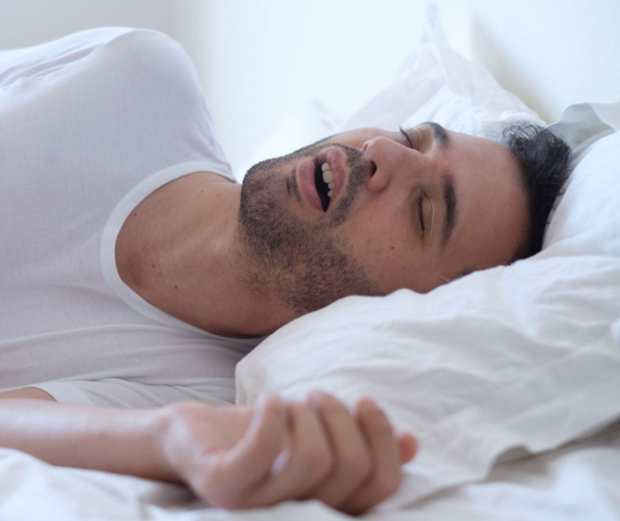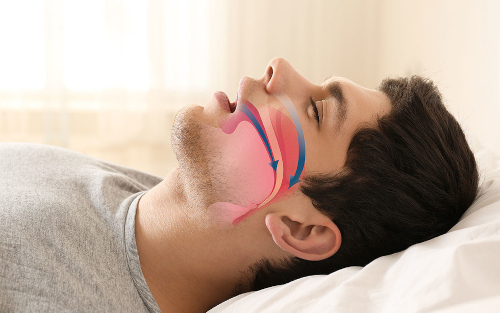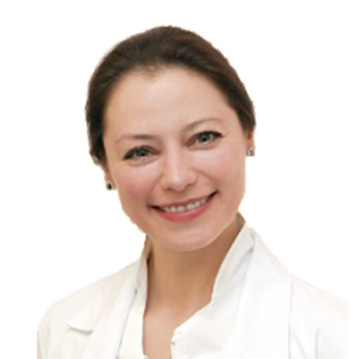Treatment of snoring
Snoring is a common disease; the sleep of 30% of adults is accompanied by it. This disease not only affects the comfort of others, but also causes harm to the person himself. At the K+31 clinic, our doctors use modern approaches to the treatment of snoring.

Best
specialists
specialists

Expert
equipment
equipment

Advanced diagnostic
treatment
treatment

How common?
- The prevalence of OSA is up to 40% of the total population, while the combination of sleep apnea with snoring can reach 96%
- Severe sleep apnea, requiring active treatment, is detected in 10-12% of patients with apnea
- The prevalence of snoring in children aged 2-6 years is about 10-14%, sleep apnea – 1-3%
- In persons over 60 years of age, the incidence of OSA is 20-30%, in persons over 65 years of age – reaches 60%
- In case of obesity of 1st degree and higher, the frequency of OSA is 8-12 times higher
Etiology

- Narrowing of the respiratory tract (pathology of the nasal cavity, nasopharynx and oropharynx, paranasal sinuses, larynx, hypertrophy of the tongue root, atony and hypertrophy of the soft palate, hypertrophy of the uvula, obesity, etc.).
- Decreased tone of the pharyngeal muscles (obesity, hormonal disorders, taking sedatives, tranquilizers, sleeping pills, alcohol).
- Decreased pressure in the trachea and bronchi during inspiration (pathology of the lower respiratory tract).
Заболевания вызывающие храп

- Curvated nasal septum.
- Congenital narrowness of the nasal passages and/or pharynx.
- Hypertrophy of the inferior turbinates.
- Nasal polyposis.
- Small, posteriorly displaced lower jaw (with malocclusion).
- Hypotony and hypertrophy of the soft palate and uvula.
- Adenoid vegetations.
- Hypertrophy of the palatine tonsils.
- Hypertrophy of the lingual tonsil and root of the tongue.
- Neoplastic tumors of the ENT organs.
- Obesity.
The long course of the disease affects the formation of the facial skeleton: the lower jaw droops, the nasolabial folds are smoothed out, the mouth is half open, the hard palate becomes high and narrow, which disrupts the bite. The patient's face takes on an adenoid appearance.
Causes of snoring

The tone of the pharyngeal muscles decreases due to other factors:
- Sleep itself (decreased muscle tone).
- Sleep deficiency and fatigue.
- Drinking alcohol.
- Taking sleeping pills.
- Smoking.
- Decreased thyroid function.
- Menopause in women.
- Aging.
Symptoms of snoring with OSA
A patient with OSA has a characteristic appearance. As a rule, these are people with a hypersthenic physique.

Frequent (>60%): regular snoring, apnea, restless sleep, daytime sleepiness, irritability.

Less frequent (10-60%): nocturnal attacks of suffocation, decreased libido and potency, night sweats, morning headache, increased blood pressure.

Rare: enuresis in children, nocturia, insomnia, night cough, esophageal reflux.
General information about the procedure
Our doctors
Make an appointment at a convenient time on the nearest date
Price
Otorhinolaryngologist primary appointment
from 4 950 ₽
Otolaryngologist repeated appointment
from 4 400 ₽
Reception of an otorhinolaryngologist at home in Moscow within the Moscow Ring Road
from 14 555 ₽
Planned remote online consultation of an otorhinolaryngologist using telemedicine technologies

Appointment to the doctor
Fill out the form, our managers will contact you within 15 minutes
Our clinics
Didn't find the service you were looking for?
Call us!
+7 (495) 104-48-14
Write to whatsapp
Ask question

































About the disease
Snoring is a sound phenomenon caused by vibration of the soft tissues of the upper respiratory tract during breathing.
Obstructive sleep apnea syndrome (OSA) is a condition characterized by snoring, periodic collapse of the upper airways at the level of the pharynx and cessation of pulmonary ventilation with continued respiratory efforts, decreased blood oxygen levels, severe sleep fragmentation and excessive daytime sleepiness (Guilleminault C., 1978).